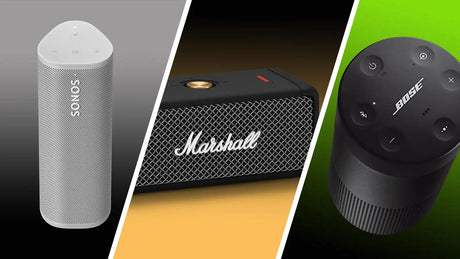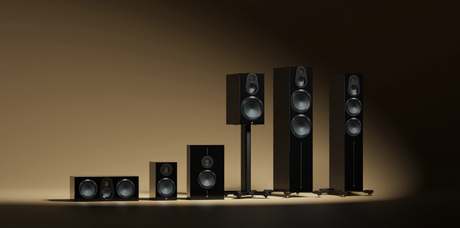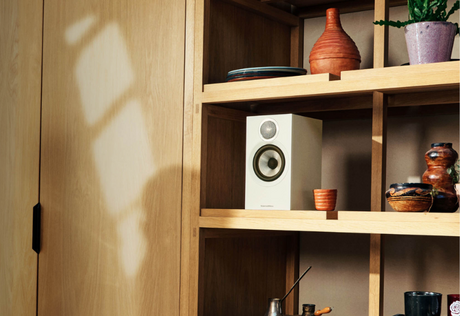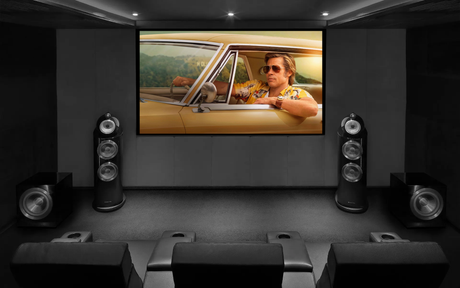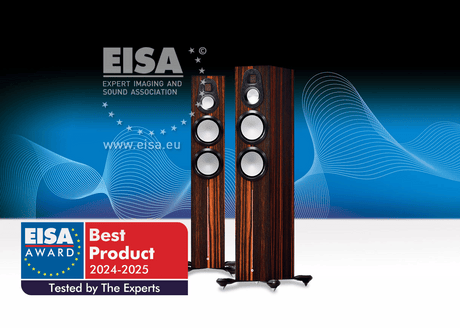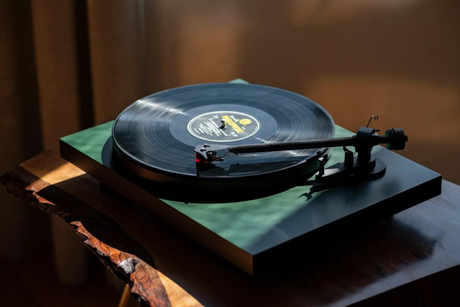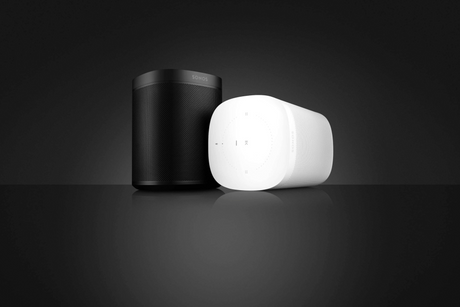For music lovers, it's important to know that Hi-Fi devices and lossless audio formats allow you to listen to music without any loss of quality. These formats, such as FLAC , ALAC , and WAV , preserve all the details of the original recording, and with the right equipment, including DACs, amplifiers, and speakers, you can enjoy flawless sound.
Key things you need to know:
- Lossless formats : FLAC (most universal), ALAC (for Apple users), WAV (highest quality, but larger files).
- Hi-Fi components : DAC (digital-to-analog converter), amplifiers and speakers are the most important elements.
- Connection : Wired connection (USB, optical) provides the best quality, but Wi-Fi and Bluetooth next-generation codecs are also suitable.
- Room acoustics : Hard surfaces can distort sound – carpets and curtains help maintain balance.
To fully exploit the potential of lossless formats, it is necessary to have a well-tuned Hi-Fi system and properly selected equipment. AUTOGARSAS.LT offers a wide selection and expert assistance at every step - from equipment selection to its optimization.
LOSSLESS AUDIO Explained! AAC | Lossless | Hi-Res Lossless | Apple Music
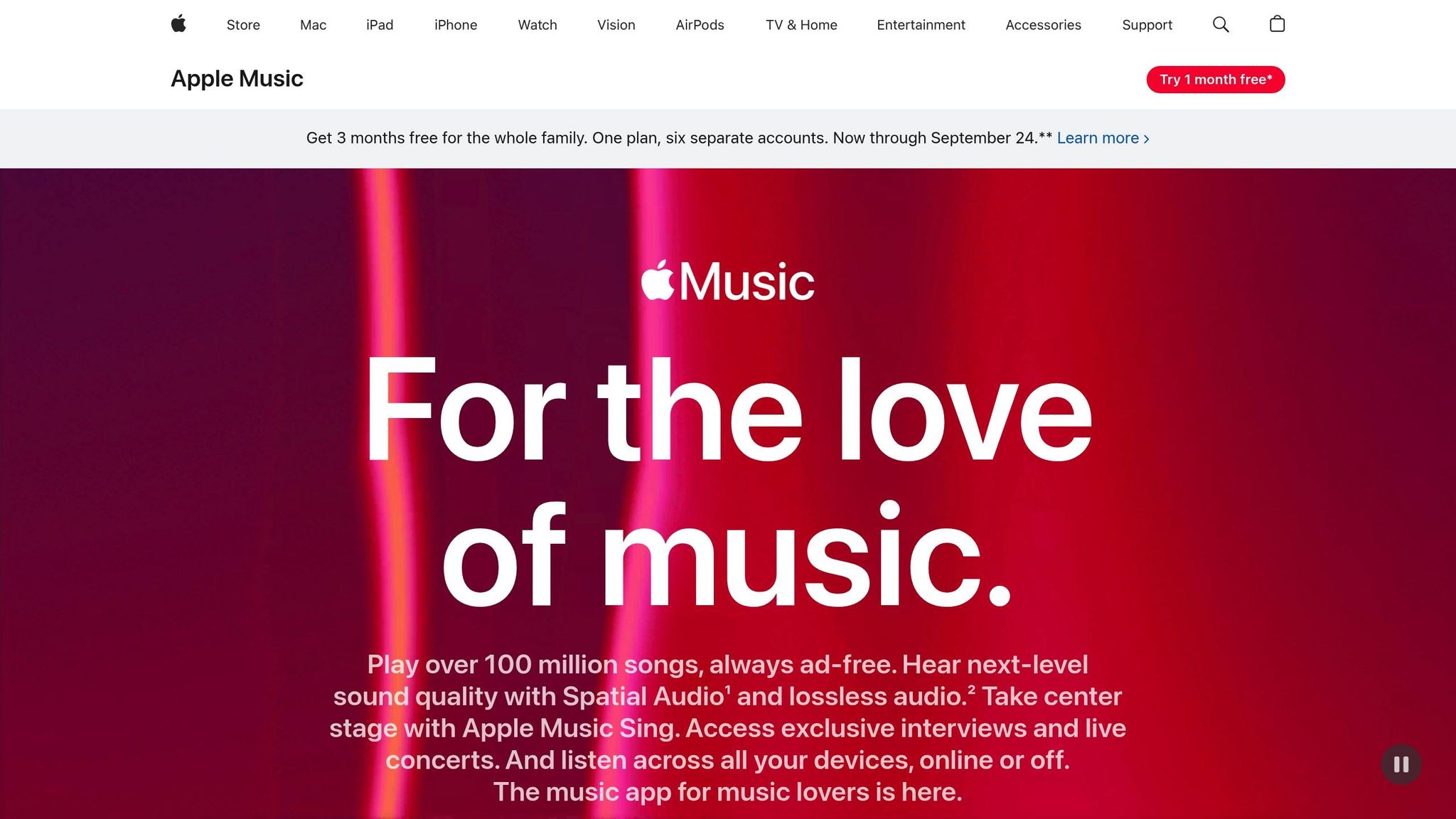
Main Lossless Audio Formats: Features and Benefits
Each lossless audio format has its own characteristics, so the choice depends on your listening needs and the equipment you use. Knowing the differences can help you find the best option for your Hi-Fi system.
FLAC : Audiophile Favorite
FLAC (Free Lossless Audio Codec) is one of the most popular lossless formats, often chosen by audio enthusiasts. This format allows you to reduce file size by 50-60% while maintaining the original sound quality.
FLAC is supported by almost all modern Hi-Fi devices, from home audio systems to car stereos. In addition, this format can reproduce sound that surpasses the traditional CD standard (16-bit/44.1 kHz).
Another feature of FLAC is the ability to include additional information, such as album title, artist, or cover art, in files. This is especially useful if you want to keep your music library organized.
AUTOGARSAS.LT offers Hi-Fi devices, such as DACs and network players , that ensure flawless FLAC playback. Some models even support playback of converted DSD files, providing even more flexibility.
ALAC : Apple Lossless Audio
ALAC (Apple Lossless Audio Codec) is a format developed by Apple for their devices. It provides the same audio quality as FLAC, but is optimized for iPhone, iPad, and Mac users.
ALAC compresses files by about 40-50%, which is slightly less than FLAC. However, with quality Hi-Fi equipment, this difference is practically imperceptible.
The main advantage of ALAC is its seamless integration with Apple Music and iTunes. When using Apple devices, playback occurs without additional conversion, which not only saves battery life but also reduces latency.
Since 2021, Apple Music has been offering Lossless and Hi-Res Lossless music in ALAC format, further popularizing the format among Apple fans.
WAV : Original Audio Accuracy
WAV is an uncompressed format that preserves the original audio signal without any changes. As a result, WAV files take up much more space than compressed formats, but offer unparalleled audio fidelity.
WAV is often chosen in professional audio studios for its reliability. This format does not require additional decoding, which reduces the load on the processor and ensures smooth playback.
However, WAV has one drawback: it has limited ability to store additional information, such as album or artist names. This can make it difficult to organize a large music collection.
AUTOGARSAS.LT specialists recommend WAV for those who have enough storage space and seek maximum audio fidelity. This format is especially suitable for critical listening or detailed sound evaluation. Using devices selected by AUTOGARSAS.LT, WAV playback will be flawless, regardless of the format.
Hi-Fi Device Compatibility with Lossless Formats
If you want to enjoy flawless lossless sound quality, high-quality audio files alone are not enough. It is important to have the right equipment that can accurately reproduce these files. We will discuss how to ensure that your Hi-Fi system is compatible with lossless audio formats, because only the right combination guarantees the best listening experience.
Basic Hi-Fi Components
A digital-to-analog converter (DAC) is a crucial element of any lossless audio system. It converts digital audio data into analog signals that your speakers can play. Modern DACs support most lossless formats and even ultra-high-quality files. AUTOGARSAS.LT offers a wide selection of DACs, including models with asynchronous USB, which reduces noise and improves sound quality.
Network players allow you to stream lossless music directly from the internet or your home network. Many have a built-in DAC and support UPnP/DLNA protocols, giving you easy access to your music libraries.
Amplifiers are responsible for amplifying the audio signal without distortion. Low THD+N values (up to 0.01%) ensure transparent and accurate reproduction.
Speakers are the final element in the chain that shapes your listening experience. Quality models reproduce the standard 20 Hz - 20 kHz frequency range, and some even up to 40 kHz , which is especially important for Hi-Res audio enthusiasts.
Next, we'll discuss how proper connection methods can improve your system's performance.
Connection and Playback Options
A wired connection remains the most reliable way to ensure lossless audio quality. USB supports many lossless formats and transmits signals up to 32-bit/384 kHz . However, it is important to choose a high-quality cable, as even small interference can affect the sound.
Optical and coaxial connections offer up to 24-bit/192 kHz transmission and are immune to electrical interference, making them particularly suitable if the DAC is located far from the signal source.
Ethernet connection for network players ensures stable data transfer. Gigabit connection can easily handle multiple 24-bit/192 kHz streams simultaneously. AUTOGARSAS.LT recommends using Cat6 or higher category cables.
Wi-Fi is also suitable for lossless music, but you need a stable 5 GHz network. For example, a single 24-bit/96 kHz stream requires about 4.6 Mbps of bandwidth, so even a medium-speed Wi-Fi network can handle it.
Bluetooth with aptX HD and LDAC codecs can now offer near-CD quality, although a wired connection is still the best option.
In addition to physical connectivity, it is important to pay attention to the compatibility of operating systems and devices.
Operating System and Device Compatibility
Windows supports FLAC since version 10, and macOS supports ALAC via Core Audio. iOS supports Apple Music Lossless since version 14.6, and Android devices natively play FLAC files.
Windows users are recommended to use programs such as Foobar2000 or JRiver Media Center , which, using WASAPI or ASIO drivers, bypass the Windows audio mixer and allow direct communication with the DAC.
macOS delivers high-quality audio without any additional setup, and apps like Audirvana and Roon further enhance the listening experience.
On iOS devices, to take advantage of lossless capabilities, an external DAC via a Lightning‑USB adapter is often required. AUTOGARSAS.LT offers special DACs adapted for iOS devices.
Android phones with Hi-Res Audio certification can play files up to 32-bit/384 kHz . USB Audio Class 2.0 support allows you to easily connect external DACs without additional drivers.
AUTOGARSAS.LT specialists are ready to help you choose the most suitable solutions so that your Hi-Fi system reveals the full potential of lossless formats.
sbb-itb-02aace5
Advantages of lossless audio formats
Before you decide to go with a lossless audio system, it’s worth understanding the benefits these formats can provide. Lossless audio formats allow you to play music exactly as it was recorded—without any loss or distortion [1] [2] [3] . This means you’ll hear every subtle nuance of instruments, clear vocals, and spatial sound placement. This quality allows you to enjoy music the way the artists intended it.
Another important feature is that these formats provide archival accuracy, which is extremely important for professional audio evaluation [1] [2] . When used with high-quality Hi-Fi equipment, lossless formats reveal their full potential, providing impeccable sound that will satisfy even the most demanding audio enthusiasts [1] [2] [3] .
AUTOGARSAS.LT specialists can help you choose the best solutions to ensure that your investment in premium audio systems provides maximum satisfaction. Below we will discuss how to properly adapt a Hi-Fi system to lossless formats.
Configuring a Hi-Fi system for lossless playback
In this section, we will discuss how to properly configure your Hi-Fi system so that you can enjoy flawless lossless sound quality.
Choosing the right components
To achieve the highest sound quality, a Hi-Fi system should consist of three main components: a DAC , an amplifier, and speakers. Each of them plays an important role in reproducing the nuances of lossless formats.
- DAC (Digital-to-Analog Converter) : This device converts digital audio signals to analog. AUTOGARSAS.LT offers such reliable brands as Cambridge Audio and Marantz , whose models support FLAC, ALAC and WAV formats up to 24-bit/192 kHz. This ensures accurate and clean signal conversion.
- Amplifier : Its choice depends on the sensitivity of the speakers and the size of the room. Denon and Yamaha amplifiers, which you will find at AUTOGARSAS.LT, often have integrated DAC solutions that support lossless formats. This not only simplifies system configuration, but also improves signal quality.
- Speakers : They provide the final sound and shape its character. AUTOGARSAS.LT offers KEF , Focal and Bowers & Wilkins models, which are renowned for their accuracy and wide frequency range. These speakers perfectly convey the subtleties of lossless formats.
Tips for optimizing sound quality
To fully exploit the potential of your Hi-Fi system , there are several important aspects to consider:
- Component placement : It is recommended to place the speakers in a triangular shape, maintaining a distance of 30-50 cm from the walls. This helps to ensure a balanced and spacious sound.
- Cables : High-quality cables reduce signal loss. AUTOGARSAS.LT offers In-Akustik and Clicktronic cables, which have minimal noise impact. For analog connections, use the shortest cables possible.
- Room acoustics : Hard surfaces like glass or bare walls can cause sound reflections and distort the signal. Upholstered furniture, carpets, and curtains help control these reflections and improve audio accuracy.
- Power supply : Electrical noise can affect sound quality. Use a separate power line for your Hi-Fi equipment or a quality power filter to reduce this effect.
Technical support and troubleshooting
The AUTOGARSAS.LT team is ready to help with both system configuration and technical troubleshooting. Here are some of the most common situations:
- Compatibility Issues : Not all DACs support all lossless formats equally effectively. If you encounter any issues, AUTOGARSAS.LT specialists can check the specifications of your equipment and suggest suitable upgrades or alternatives.
- Software Compatibility : Different playback programs may handle lossless files differently. If you encounter any issues, AUTOGARSAS.LT provides assistance to ensure smooth playback.
- Periodic maintenance and optimization : After installation, AUTOGARSAS.LT offers ongoing technical support. Experts can periodically evaluate your system and offer solutions for its improvement. In addition, if the room environment changes or new components are added, it may be necessary to perform system calibration.
A properly configured and maintained Hi-Fi system will allow you to enjoy impeccable lossless sound quality that reveals all the details of the music.
Conclusion: Improve your audio experience with AUTOGARSAS.LT
When it comes to high-quality audio technologies, it is clear thatHi-Fi equipment , along with lossless formats such as FLAC, ALAC and WAV , allow you to enjoy extremely detailed sound that is close to the original recording. These formats preserve all the subtleties of the audio recording, and a properly selected Hi-Fi system ensures a flawless listening experience.
When choosing a sound system, it is important to consider the compatibility of all components. The benefits of lossless formats are revealed only when the right equipment is used. Solutions that offer not only quality products but also local support are particularly valued in the Lithuanian market - this ensures a smooth experience from consultation to equipment installation.
A properly selected Hi-Fi system not only ensures exceptional sound reproduction, but also becomes a long-term investment that is worth making. AUTOGARSAS.LT is a reliable partner, offering high-quality audio equipment and professional assistance at every step - from the initial selection to system maintenance. With the help of their experts, you will be able to enjoy the benefits of lossless formats and discover new nuances of your favorite music, which will give you real joy every time you turn on the music.
FAQs
How to choose the best lossless audio format for your Hi-Fi system?
When choosing a lossless audio format for your Hi-Fi system, the most important things to consider are sound quality and device compatibility. WAV and AIFF are known for their impeccable sound quality – they retain all the original audio content without any loss of quality. Meanwhile, FLAC offers a more practical solution: it reduces the file size while maintaining high sound quality. For this reason, FLAC is extremely popular among audio enthusiasts.
Before making a decision, be sure to check whether your Hi-Fi system supports the selected format. If you are not sure or need additional help, AUTOGARSAS.LT can offer not only a wide range of high-quality audio equipment, but also professional consultations that will help you find the best solution for your needs.
What are the basic Hi-Fi components needed for high-quality lossless audio playback?
To enjoy high-quality lossless audio playback, you need to take care of several essential components of your Hi-Fi system. First of all, the audio source is very important. This can be a DAC (digital-to-analog converter) or a high-end player - they allow you to preserve the sound quality without any loss.
Another important element is the amplifier . This can be an AV receiver or an amplifier that supports high dynamic range. It ensures that the sound is powerful and clear. Finally, it is necessary to have quality speakers or headphones that will allow you to fully experience the benefits of lossless formats such as WAV or FLAC.
All of these components must be compatible with each other and support lossless formats. Only in this way will you achieve maximum sound accuracy and detail. With the right equipment, you can enjoy impeccable sound both at home and elsewhere.
How do room acoustics affect the sound of a Hi-Fi system and how can it be improved?
Room acoustics have a significant impact on the sound quality of a Hi-Fi system – they can determine up to 50% of the clarity of the sound. If the acoustics are poor, you may experience echoes, distortions or unwanted reflections that distort the natural sound.
To improve acoustics, it is worth considering the use of sound absorption and diffusion elements . They help reduce reflections and create a more balanced sound. In addition, modern technologies, such as Room Correction , automatically adjust the sound parameters to the characteristics of the room, so that the sound is clear and natural. With the right application of these solutions, your Hi-Fi system at home will sound as it should - flawlessly.


